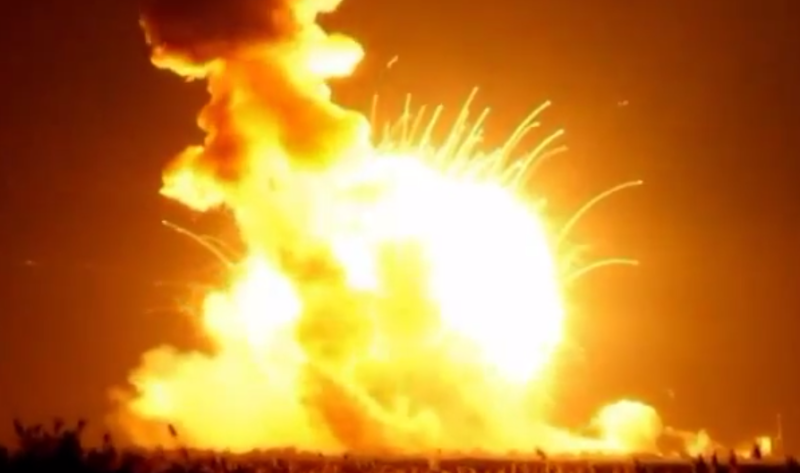

On Tuesday, an unmanned supply rocket designated for the International Space Station exploded seconds after launch.
On Tuesday, a supply rocket fell out of the sky in a fiery explosion. The Orbital Sciences Corporation Antares rocket combusted into destruction six seconds after it had taken off from NASA's flight base in Wallops Island, Virginia. The explosion occurred around six in the evening.
Despite extensive property damage, the explosion did not cause any injuries. NASA keeps a 1,400 square mile hazard area in the event of a failed launched. The unmanned rocket was designated for the International Space Station, and was carrying supplies that would replenish the station's resources.
The spacecraft was the third in a series of eight trips to the International Space Station (ISS) in a $1.9 billion contract NASA signed with the Orbital company. The rocket held a Cygnus spacecraft that would attach to the space station; it held satellites, food and other supplies for the crew at the ISS, science experiments, and science equipment.
The crew aboard the ISS is not directly affected by the setback. "The station's in great shape, the crew's in good shape, we've got plenty of work for them to do on orbit and plenty of supplies on orbit to keep them going for quite some time," said Michael T. Suffredini, the manager of the space station program.
Exact reasons for the explosion are currently being investigated, with Orbital leading the investigations. Some believe that the rockets were the reason for the explosion, since they were from the failed Russian space program from the 60's and 70's. Experts, however, claimed that the rockets were functional and ready for use.
Recently, NASA has been opting for contracts with private companies to transport both equipment and astronauts in order to increase efficiency, decrease cost, and support the commercial space industry. An instance of NASA's new approach is the recent contract with SpaceX and Boeing to transport astronauts to the ISS as early as 2017.



















